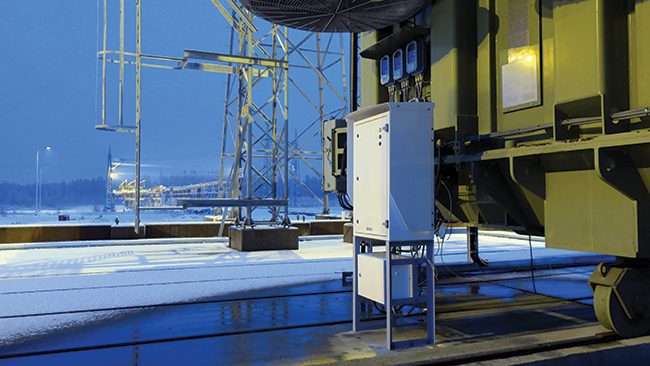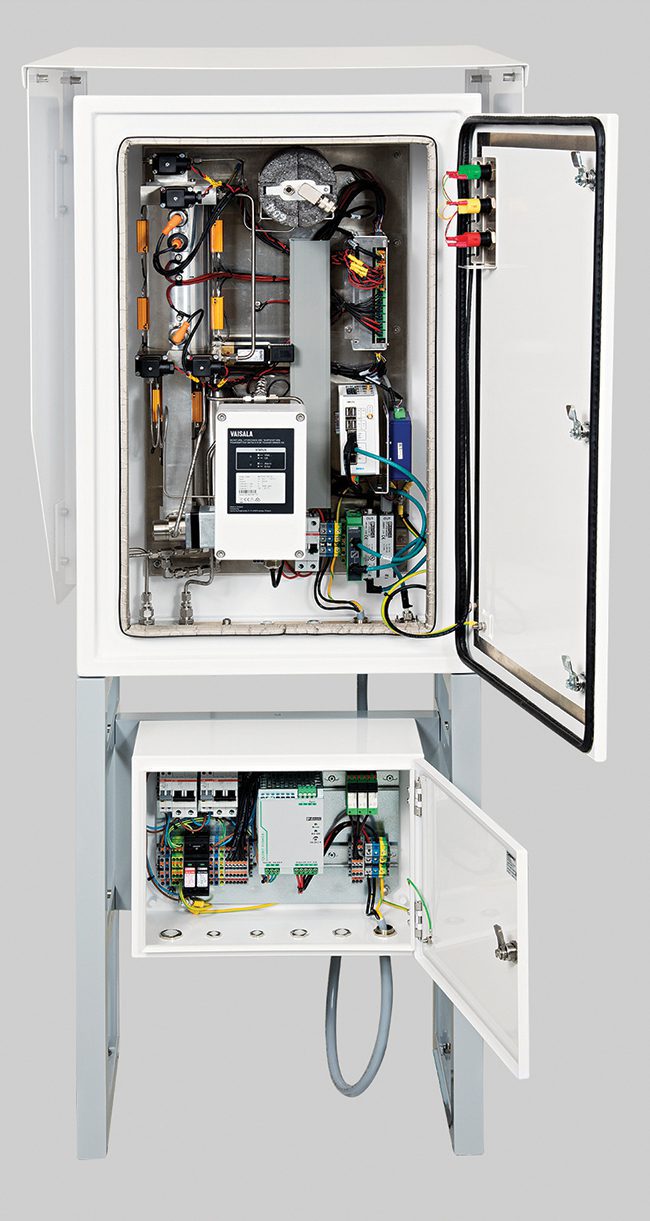How Measuring Total Gas Pressure Detects Transformer Air Leaks
From generation to transmission and distribution, the power industry is changing. With distributed energy resources (DERs) increasingly participating in wholesale capacity, energy, and ancillary services markets, new regulations are helping spur the development of innovative technologies that can enhance our electrical grid.
While some new technologies are already online and making a difference as the economy continues to move toward electrification, aging infrastructure is still utilized to generate, transmit, and distribute the electricity that powers our modern lives. Unfortunately, that older equipment has higher failure rates, which can lead to interruption for customers as well as higher inspection, maintenance, repair, and restoration costs. This fascinating dynamic offers a myriad of different and interesting opportunities to revolutionize how the industry operates—and highlights the significance of power transformer monitoring.
Power transformers are one of the most important elements of the electric power system because they are used to transmit electrical energy between the generator and the primary distribution circuits. Transformers are often utilized in distribution networks to enable the interconnection of different voltage levels to transfer energy over long distances. The lifecycle of these instruments is about 40 years, but since transformers are among the most expensive components in the network, monitoring is critical to detect any problems as early as possible, thereby avoiding sudden failures and electricity outages.
By detecting problems at an early stage, power utilities are able to schedule a planned service break to make necessary repairs or carry out the maintenance necessary to avoid a costly failure. With the increased number of sealed transformers, ambient air leaks have become a significant issue as oxygen and moisture accelerate the aging—and degradation—of paper used in the insulation. A power transformer’s residual life relies heavily on the condition of the insulation paper within its windings, so keeping the transformer dry and free of oxygen is crucial.
Limitations of Traditional Monitoring Methods
New power transformers tend to feature sealed designs (Figure 1), and many old transformers are retrofitted with sealing systems to keep oxygen and moisture out. Air leaks often result from the embrittlement of gaskets or the rubber bag, and the issue of air leaks as a source of oxygen has grown in importance in recent years. However, the increased use of sealed transformer designs challenges asset managers to confirm that the tanks remain sealed from oxygen and atmospheric humidity intrusion.
 |
|
1. Vaisala’s OPT100 Optimus, a maintenance-free multi-gas dissolved gas analysis (DGA) monitor, safeguards power transformers 24/7. The OPT100 brings long-term stability, reliability, and measurement performance for detection of any formation of fault gases. Courtesy: Vaisala |
Measuring oxygen concentration in oil is one way to confirm air ingress, but measuring oxygen directly will not necessarily reveal if air gets in. That’s because oxygen sensors cannot detect air leaks if there are reactions in a transformer that consume oxygen. Plus, keeping an eye on only oxygen requires an experienced dissolved gas analysis (DGA) specialist to review and interpret the measured results, since there is not an internationally recognized standard for understanding how oxygen concentration in transformer oil impacts the operational life of power transformers.
While the seven key fault gases are used for transformer diagnostics, oxygen and nitrogen often remained in the specifications because oxygen accelerates the aging of the transformer’s solid insulation. To maximize a transformer’s lifetime, its oxygen levels should remain as low as possible.
Traditionally, air leaks have been detected by measuring oxygen and nitrogen from standard DGA oil samples, but the risk of sample contamination with ambient air poses a significant problem. Taking samples at the transformer site, and then transporting and handling the samples can introduce oxygen to such samples, which can lead to inaccurate interpretations of the data. Even though the contamination can be identified by observing nitrogen level fluctuations in DGA results over extended periods of time, oxygen measurement alone will provide mixed results.
 |
|
2. The Vaisala Optimus DGA Monitor contains no consumables to service or replace. Its vacuum gas extraction means no data fluctuation due to oil temperature or pressure, while hermetically sealed and protected optics prevent sensor contamination. Moisture is measured directly in the oil with a capacitive thin-film polymer HUMICAP sensor. Courtesy: Vaisala |
Some DGA monitors (Figure 2) have integrated oxygen measurement and nitrogen levels are calculated based on those oxygen values. However, those calculations assume that the oil is saturated to ambient air with a constant oxygen-nitrogen ratio, failing to consider that such calculated nitrogen values are only valid for free-breathing transformers—not for transformers with sealed designs. When compared against laboratory reference results, those DGA monitors show significant bias when used for sealed transformers, and the typical large fluctuation in data makes determining the possible ingress of air into the transformer tank difficult.
But at the end of the day, decision-makers don’t need to know the exact concentration of oxygen or nitrogen gases. Instead, they need to know whether their sealed transformer is exposed to air ingress, with air being the source of oxygen. Recognizing the significant shortcomings of traditional monitoring techniques, Vaisala, a global technology leader and expert in weather, environmental, and industrial measurements, developed a new method to detect air leaks by measuring total gas pressure.
Measuring Total Gas Pressure: A Step Forward
The total gas pressure (TGP) method detects the total pressure of all gases dissolved in oil and is an easier way to detect the ingress of air. A very simple and intuitive parameter, TGP is the sum of the partial pressures of all gases dissolved in the oil.
Once the gases are extracted, it is easy to measure the pressure of those in a controlled environment. Since the key fault gases—hydrogen, methane, acetylene, ethylene, ethane, carbon monoxide, and carbon dioxide—always represent a negligible part of the pressure, if a transformer is sealed, any TGP value increase indicates an air leak—no specialist opinion and interpretation needed.
Especially with new transformers, the gas pressure should be very low because the tank and the oil are degassed during commissioning. If it is a sealed transformer, then the pressure will remain low, but if the pressure starts to clearly increase, that typically indicates something is wrong.
As previously noted, oxygen sensors cannot detect air leaks if there is an oxygen-consuming reaction in the transformer. Even if all oxygen has been consumed, the TGP value will still give a reliable indication of a leak because the nitrogen value will both dominate and increase over time, since it is neither formed nor consumed in the transformer.
By measuring the pressure of all extracted gases and looking at the data, utilities receive a clear indication of air coming in if the pressure increases after degassing. A well-sealed transformer will maintain low levels of gas pressure for decades, even up to the full lifetime of the transformer. The pressure value will be far below atmospheric pressure, so if that TGP value begins creeping up, that clearly indicates that air is somehow coming in. And when air is leaking in, that indicates an issue with the transformer’s sealing, either with materials or even with workmanship should the increase appear following maintenance activities.
If the data shows a recent ingress of air through the TGP increase, then technicians can decide if there is something they need to check during the next service break to ensure no further degradation of the insulating paper happens due to oxygen. That could involve looking at the sealing or gaskets, checking for a broken membrane, or some other maintenance activity.
As the power industry continues its transformation, detecting transformer faults as they arise will remain critical. By providing a direct indication that a transformer is a sealed transformer with a severe air leak, the TGP method will help power utilities detect and repair any air ingress early, ultimately optimizing the efficiency and maximizing the service life of a power transformer.
—Senja Leivo is the senior industry expert at Vaisala and an active member of CIGRE (International Council on Large Electric Systems) working groups.